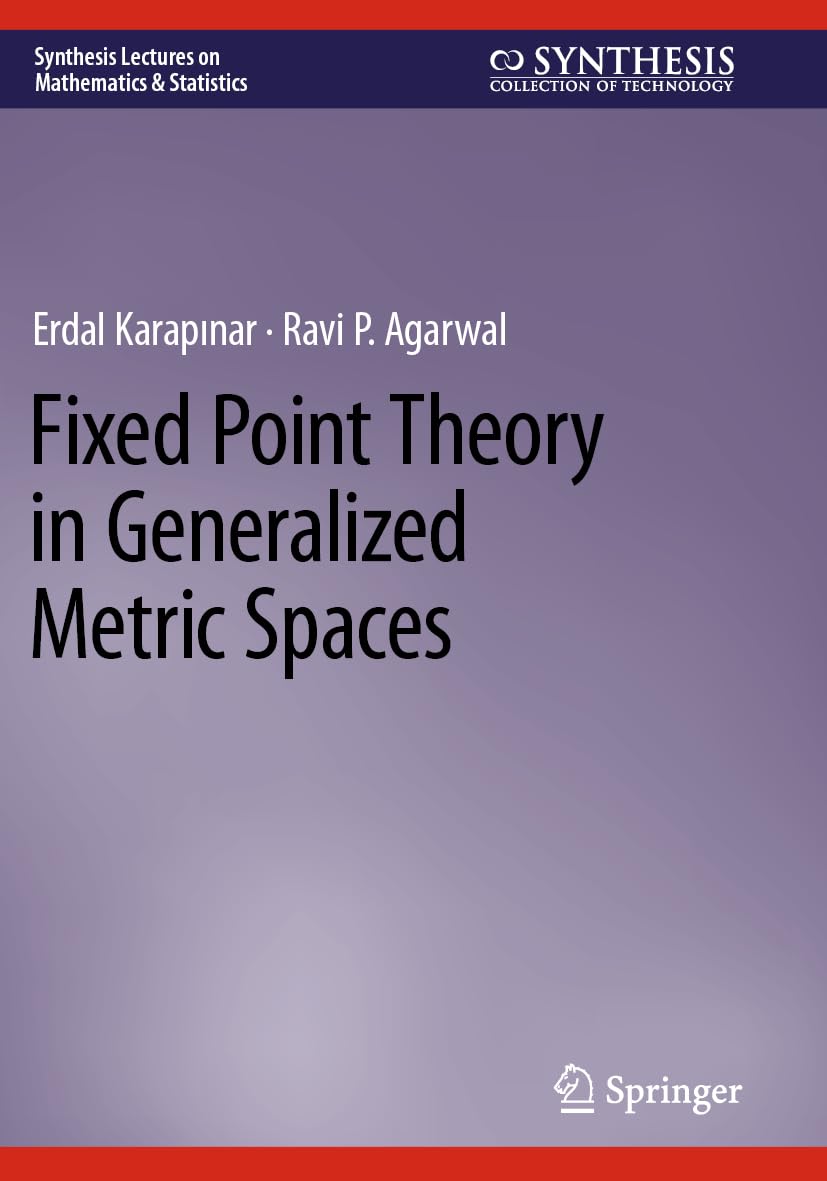
- Author: Erdal Karapinar and Ravi P. Agarwal
- Series: Synthesis Lectures on Mathematics & Statistics (SLMS)
- Publisher: Springer
- Publication Date: 12/08/2023
- Number of Pages: 136
- Format: Paperback
- Price: $59.99
- ISBN: 978-3-031-14971-9
- Category: textbook
[Reviewed by Ludovick Bouthat, on 07/10/2025]
Fixed point theory is one of the major research areas in nonlinear functional analysis, topology
and real analysis, which deals with the study of fixed points of functions. A fixed point of a
function is a point in the domain of the function that is mapped to itself by the function. Fixed
point theory also has several applications in various areas of applied mathematics such as
computer science and economics. For instance, it has been used to study the existence and
stability of Nash equilibrium.
The present book is addressed to researchers from various fields but is still accessible for graduate students and some high-level undergraduates, and it does a good job of being self-contained. It aims to be a reference in the field of fixed-point theory, and particularly in fixed point theory in generalized metric spaces. As such, the book contains no exercises, but it does have a lot of enlightening examples.
The book is separated in two parts. The first part introduces some preliminaries in fixed-point
theory, important results, and some historical notes. For instance, some well-known fixed-point
theorems are presented such as the Banach Fixed-Point Theorem and the Brouwer Fixed-Point
Theorem. However, it is worth noting that other important fixed-point theorems are omitted,
such as Kakutani's and Schauder's Fixed-Point Theorem. A reader familiar with the subject could
skip the first three chapter, although the historical notes are concise and interesting.
The second part of the text focuses on generalizations of the fundamental results to b-metric
spaces and partial metric spaces. It is this second part that differentiates this text from other
classical textbooks on the subject, such Fixed Point Theory from Granas and Dugundji. The
authors do a great job of choosing and organizing which results to present in the book.
However, only the proofs of some of the theorems are presented, and in the second part of the
text the proof of almost all results is avoided. Despite these proofs not being present, it is very
well referenced, and the origin of every major result in the book is clear.
While the book is well structured and easy to follow, it also contains some missing words and
some syntactically incorrect sentences. There are also some undefined references (e.g., at page
75), and the index is a bit short, making the book somewhat difficult to navigate at times.
However, most of the time this does not affect the clarity of the book in a significant way.
Ludovick Bouthat (ludovick.bouthat.1@ulaval.ca) is a PhD student at Université Laval.
